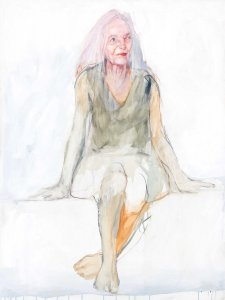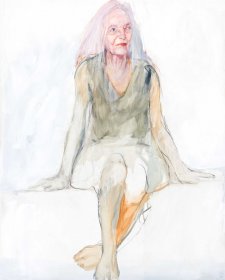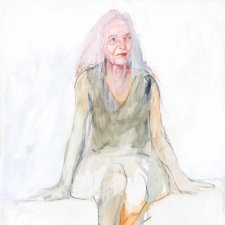- About us
- Support the Gallery
- Venue hire
- Publications
- Research library
- Organisation chart
- Employment
- Contact us
- Make a booking
- Onsite programs
- Online programs
- School visit information
- Learning resources
- Little Darlings
- Professional learning
Sir James Martin (1820-1886) was fourth Chief Justice of New South Wales. A brilliant student, he began working as a journalist with the Australian, promoting the interests of the native-born. He was admitted as a solicitor in 1845, the year he became manager and editor of Robert Lowe’s anti-Gipps paper the Atlas. At around this time, according to his biographer Bede Nairn, ‘his enemies diversified, repelled by his rare combination of lowly birth, pugnacity, colonial patriotism, ability and growing wealth’; a prominent Catholic chaplain held him up as a ‘living example of the effects of an education not based upon religion’. He won a seat on the Legislative Council in 1848, weathering objections that he lacked the necessary property qualifications. He became attorney-general in 1856 (again, a controversial appointment, as he had not at that stage been admitted to the Bar) and was made QC in 1857. Spending a fortune on renovating Clarens in Wylde Street, Potts Point, he was active in choral and educational matters and lobbied for the beautification of Hyde Park. In 1863 he became premier; it was to be the first of his three terms in the position (1863–1865, 1866–1868 and 1870–1872). Martin’s appointment as New South Wales’s fourth chief justice in 1873, according to Nairn, was ‘the greatest triumph of the native-born in the nineteenth century.’ After bearing fifteen children, his wife left him in 1882.
Collection: National Portrait Gallery
Purchased with funds provided by L Gordon Darling AC CMG 2009
L Gordon Darling AC CMG (38 portraits supported)



On one level The Companion talks about the most famous and frontline Australians, but on another it tells us about ourselves.



The Darling Prize is a new biennial prize for Australian portrait painters, painting Australian sitters. The winner receives a cash prize of $75,000.



This exhibition showcases portraits acquired through the generosity of the National Portrait Gallery’s Founding Patrons, L Gordon Darling AC CMG and Marilyn Darling AC.